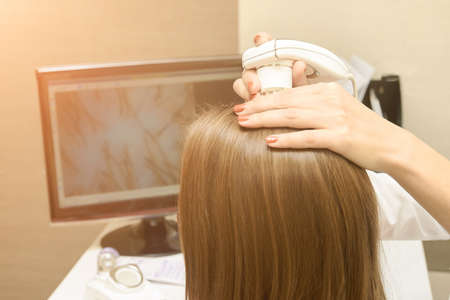1. Understanding the Causes of Hair Loss
Hair loss is a common concern for many Americans, affecting both men and women of all ages. Before exploring affordable ways to prevent hair loss, its important to know what causes it in the first place. Here’s a simple breakdown of the most common reasons for hair loss in the U.S.:
| Cause | Description | Common in the U.S.? |
|---|---|---|
| Genetics (Hereditary) | Androgenetic alopecia, often called male or female pattern baldness, is passed down from family members. | Very common |
| Lifestyle Factors | Poor diet, lack of exercise, high stress levels, and insufficient sleep can all impact hair health. | Common |
| Hormonal Changes | Pregnancy, menopause, thyroid problems, and other hormonal imbalances may trigger hair loss. | Common among adults |
| Medical Conditions | Certain illnesses like autoimmune disorders or scalp infections can cause hair thinning or shedding. | Less common but possible |
| Medications | Chemotherapy, blood pressure drugs, and some antidepressants list hair loss as a side effect. | Depends on medication use |
| Environmental Factors | Exposure to pollution, harsh weather, or water with high chlorine content may damage hair follicles. | Varies by location |
If you’re experiencing hair loss, it might be due to one or more of these factors. Knowing what’s behind your hair loss is the first step toward finding budget-friendly solutions that work for your situation.
2. Affordable At-Home Hair Care Practices
Taking care of your hair doesn’t have to cost a fortune. By making a few simple changes to your daily routine, you can help prevent hair loss and keep your hair healthy—without spending a lot of money. Here are some budget-friendly tips that you can easily practice at home:
Gentle Washing Habits
Washing your hair too often or using harsh shampoos can strip away natural oils, leaving your scalp dry and more prone to hair shedding. Instead, choose a mild shampoo and only wash your hair when needed. Try these tips:
| Tip | Why It Helps |
|---|---|
| Use lukewarm water | Hot water dries out the scalp and weakens hair roots |
| Choose sulfate-free shampoo | Less irritating and keeps natural oils intact |
| Avoid vigorous rubbing with towel | Prevents breakage and reduces stress on hair strands |
Scalp Massage for Better Circulation
A simple scalp massage every day can boost blood flow to the hair follicles, which may encourage stronger, healthier growth. You don’t need any fancy tools—just use your fingertips in small, gentle circles for 3–5 minutes.
How to Do an At-Home Scalp Massage:
- Sit comfortably and relax your shoulders.
- Place your fingertips (not nails) on your scalp.
- Move your fingers in small, circular motions all over your head.
- You can do this before or after shampooing, or even while watching TV.
Avoid Tight Hairstyles
Ponytails, braids, buns, and other tight styles pull on the hair shaft and can lead to traction alopecia—a type of hair loss caused by tension. Opt for looser hairstyles or let your hair down whenever possible.
| Do This Instead Of That | |
|---|---|
| Loose braid or ponytail | Tight bun or high ponytail |
| Scrunchies or fabric bands | Elastic bands with metal parts |
| Letting hair air-dry naturally | Using heat styling tools daily |
Bonus Tip: Comb Gently!
If you have tangles, start combing from the ends and work your way up to avoid unnecessary pulling. Use a wide-tooth comb for less breakage.
![]()
3. Budget-Friendly Products to Support Hair Health
Taking care of your hair doesn’t have to break the bank. There are plenty of wallet-friendly options available at local drugstores across the U.S. that can help support hair health and prevent hair loss. Here’s a quick guide to some affordable and effective products you can easily find in-store or online.
Shampoos and Conditioners
Look for shampoos and conditioners with nourishing ingredients like biotin, caffeine, keratin, or saw palmetto. These ingredients are known to strengthen hair and promote a healthy scalp without costing a fortune. Here are some top picks:
| Product | Main Benefit | Average Price Range | Where to Find |
|---|---|---|---|
| OGX Thick & Full Biotin & Collagen Shampoo/Conditioner | Strengthens thin hair and boosts volume | $7–$10 | Target, Walmart, CVS |
| Pura D’or Original Gold Label Anti-Thinning Shampoo | Reduces thinning and supports scalp health | $15–$20 | Amazon, Walgreens |
| TRESemmé Keratin Smooth Shampoo/Conditioner | Smooths frizz and fortifies hair strands | $5–$8 | Walmart, Walgreens, Rite Aid |
| NaturAll Club Avocado Kiwi Moisturizing Conditioner (Travel Size) | Nourishes dry scalp and adds moisture | $7–$9 (travel size) | NaturAll Club website, Target.com |
Over-the-Counter Treatments for Hair Loss Prevention
If you’re looking for something beyond shampoo and conditioner, several over-the-counter (OTC) treatments can be found at most American drugstores. These products are designed to help reduce shedding and stimulate new growth without a prescription:
| Product | Main Ingredient(s) | Purpose/Benefit | Price Range | Where to Buy |
|---|---|---|---|---|
| Rogaine Minoxidil Topical Solution (Generic options available) | Minoxidil 5% | Promotes regrowth in thinning areas; FDA-approved for hair loss treatment | $25–$35 per month supply (generic: $15+) | CVS, Walgreens, Walmart, Amazon |
| The Ordinary Multi-Peptide Serum for Hair Density | Peptides, Caffeine, Castor Oil Extracts | Supports scalp health and denser-looking hair; lightweight leave-in formula | $18–$22 per bottle (2 fl oz) | Ulta Beauty, Sephora, The Ordinary website |
| Nioxin Night Density Rescue Serum (Travel Size) | Caffeine, Antioxidants Complexes | Helps fight oxidative stress on scalp; supports fuller hair overnight | $10–$15 (travel size) | CVS, Ulta Beauty, Amazon |
Tips for Choosing Drugstore Hair Care Products
- Avoid harsh sulfates: Look for “sulfate-free” labels if you have a sensitive scalp.
- Check the ingredient list: Aim for products with nourishing oils (argan oil, jojoba oil), proteins (biotin, keratin), and vitamins.
- Don’t over-wash: Stick to washing your hair 2-3 times a week unless you have an oily scalp.
- Pair shampoo with conditioner: Using both helps maintain moisture balance and reduces breakage.
Your Local Drugstore Is Your Friend
You don’t need fancy salons or expensive subscriptions to get results. With these budget-friendly options from your neighborhood drugstore or favorite online retailer, supporting your hair health is easy and affordable.
4. Nutrition and Lifestyle Tips to Strengthen Hair
If you want to prevent hair loss without breaking the bank, focusing on your nutrition and daily habits is key. Experts agree that what you eat and how you manage your stress can have a big impact on your hair health. Here are simple, budget-friendly tips to help strengthen your hair from the inside out.
Eat a Balanced Diet for Healthy Hair
Your hair needs the right nutrients to grow strong and healthy. Skipping meals or eating lots of processed foods can leave your hair weak or thin. Aim to include these key nutrients in your daily diet:
| Nutrient | Why It Matters | Affordable Sources |
|---|---|---|
| Protein | Builds hair structure | Eggs, beans, chicken, lentils |
| Iron | Prevents hair thinning | Spinach, beef, tofu, fortified cereals |
| Zinc | Supports scalp health | Pumpkin seeds, chickpeas, peanuts |
| Vitamin D | Promotes new growth | Canned tuna, mushrooms, sunlight exposure |
| B Vitamins (especially Biotin) | Boosts overall hair strength | Whole grains, eggs, bananas, nuts |
| Omega-3 Fatty Acids | Keeps hair shiny and hydrated | Canned salmon, flaxseeds, walnuts |
Simple Lifestyle Changes for Stronger Hair
You don’t need expensive treatments to support your hair. Try these affordable lifestyle tips:
- Stay Hydrated: Drink plenty of water every day to keep your scalp and hair hydrated.
- Manage Stress: High stress can lead to hair shedding. Practice deep breathing, take walks outside, or try meditation apps—all low-cost ways to relax.
- Avoid Overstyling: Minimize heat styling and harsh chemical treatments that can damage your hair over time.
- Get Enough Sleep: Your body repairs itself while you sleep—including your hair follicles. Aim for 7-8 hours a night.
- Be Gentle When Brushing: Use a wide-tooth comb and avoid tugging at knots to prevent breakage.
Your Daily Hair-Friendly Routine Checklist:
- Add protein-rich foods to at least two meals per day.
- Sneak leafy greens into salads or smoothies.
- Take a walk outside for sunshine (and vitamin D) when possible.
- Sip water throughout the day—keep a reusable bottle handy.
- Unplug from screens 30 minutes before bed for better sleep quality.
- Treat yourself kindly—your hair will thank you!
5. When to Seek Professional Help
If you’ve tried several budget-friendly methods to prevent hair loss and still notice excessive shedding or thinning, it might be time to see a professional. Knowing when to get help can save you money in the long run by addressing problems early.
Signs You Should See a Specialist
| Sign | What It Means |
|---|---|
| Sudden or patchy hair loss | This may indicate an underlying medical condition that needs immediate attention. |
| Itchy, red, or scaly scalp | These symptoms could point to infections or skin conditions requiring treatment. |
| No improvement after home remedies | If budget-friendly tips haven’t worked after several months, a specialist can offer tailored solutions. |
| Family history of hair disorders | Genetic factors might require a dermatologist or trichologist’s guidance. |
Finding Affordable Professional Care
1. Community Health Clinics
Many local health clinics offer dermatology services at reduced rates. Check with community health centers in your area for sliding scale fees based on income.
2. Teaching Hospitals & Dermatology Schools
Universities with dermatology programs often have clinics where supervised students provide care at lower prices. Search for teaching hospitals near you for discounted services.
3. Telehealth Services
Some online platforms connect you with board-certified dermatologists for virtual visits, which are usually more affordable than in-person appointments.
4. Nonprofit Organizations & Support Groups
Certain nonprofits offer free screenings or support for people experiencing hair loss. Local support groups might also share resources for low-cost care options.
Quick Tips for Saving Money on Professional Help
- Ask about payment plans or financial assistance at clinics.
- Use your insurance if you have it—many policies cover dermatology visits if medically necessary.
- Look out for free skin check events in your community.
- Compare prices between clinics before booking an appointment.
If you notice any warning signs, don’t hesitate to seek expert advice—it’s an investment in your health and confidence, even when you’re on a budget.


